Could no other type of materials be used even if it means an entirely different sensor design or layout?
-
2it is not possible that only a single solution exists ... that is not the way the universe works ... there must be others ... that makes the answers to your questions `no` and `no` ... both of your questions ask the same thing using different words ... you also did not ask `which materials?` .. such a question would make more sense – jsotola Mar 25 '23 at 19:23
-
4While not a consumer level digital camera, the James Webb Space Telescope uses a mercury-cadmium-telluride (HgCdTe) sensor for the near infrared part of the spectrum. So does the Hubble Wide Field Camera 3. – SteveSh Mar 25 '23 at 19:31
5 Answers
What we see here is a discrete-time (discrete hole positions), discrete-value (which of the defined hole positions are perforated) processing of an image. So, a digital camera!
No semiconductors involved, just photosensitive lacquer, a row-wise turning metal drum and an array of finely tuned contactor arms.
The source says this is from 1926, which indeed suprised me a bit, because back then, selen-based photosensors had already been used to build wirephoto machines (especially, the Bélinographe), but the wrecking of the SS Antinoe definitely places this in 1926!
- 88,280
- 5
- 131
- 237
-
Just so I understand, it is producing a 5 bit image (5 binary holes each corresponding to different exposure levels on the photographic plates)? – user1850479 Mar 27 '23 at 17:02
-
@user1850479 can't call it bits in this context – I'll call it intensity-modulated dots – as they are not independent pieces of information carrying the same information (If you think about the construction method, the third dot can only be "set" if the first and second are set; so the third dot carries much less info than the first). It's more like an amazon product rating; you can have 1–5 stars, but you can never have the third star, and not have the first two. – Marcus Müller Mar 27 '23 at 19:35
-
Funny, I was just thinking some manner of bit-slicing could be doable say with vacuum tech; well, why not slow it down even further, and start with a static photograph to process at your leisure (say, mechanical bit rates), hah. – Tim Williams Mar 27 '23 at 21:02
No. Back in the day before cameras were using silicon CCDs, they were using video camera tubes. Completely different sensor design and layout.
- 127,425
- 3
- 97
- 261
-
-
2To be clear, these devices still used semiconductors; although the meaning of "semi" may be stretched in this case, depending on which kind of photosensitive material was used (bandgap semiconductor vs. low work function (photoemissive), using the vacuum state itself as the [low enough for visible light interaction] band gap). – Tim Williams Mar 25 '23 at 20:29
-
-
There is a second condition imposed by "digital camera". Technically, any array of photo-resistors (including thermal sensors) could be used to make an image sensor. "Digital Cameras' only became commercially available because of the development of sensors using common semi-conductor materials. – david Mar 26 '23 at 08:10
-
@david I would upvote an answer based on that argument, if you're interested. Digital circuitry is possible without semiconductors, but digital circuitry on such a vast scale required for modern sensors is utterly infeasible. For sake of counter argument, I can think of a couple ways a direct-digital tube sensor might work, but it'll surely be less performance than a CMOS one. – Tim Williams Mar 26 '23 at 15:28
-
Most practical photosensors are based on semiconductors. These can be silicon (visible light), InGaAs or Germanium (infrared), HgCdTe (mid infrared) or many other materials at least common wavelengths.
Occasionally vacuum tube sensors are still used. These have photocathodes that do not need to be semiconductors (pure metals still exhibit the photoelectric effect), although the most sensitive ones such as gallium arsenide and gallium arsenide phosphide are semiconductors.
Finally, there are microbolometers used in thermal cameras. These measure the heating of an absorber as it is warmed by light. Silicon is actually a common material for these, but primarily because it's cheap to build pixel arrays out of silicon and not because of its properties as a semiconductor. You can also get no silicon microbolometers that have no semiconductors in the actual pixel (although obviously there is a computer attached doing the read out).
- 14,842
- 1
- 21
- 43
While silicon is the most commonly used material for making image sensors in digital cameras, it is not the only material that can be used. Other materials, such as germanium, gallium arsenide, and indium phosphide, can also be used for making image sensors.
- 57
- 1
- 1
- 5
-
1…but these materials all *are* semiconductors (even if not *specifically* silicon). – Marcus Müller Mar 26 '23 at 14:57
You could make a digital camera image sensor using vacuum photocells, utilizing the photoelectric effect on a cathode. Cathode coating would need work function appropriate to the wavelength range of interest.
- 32,734
- 1
- 38
- 103
